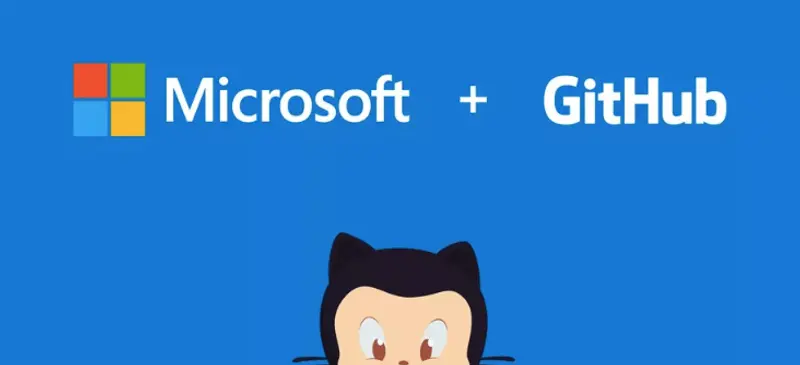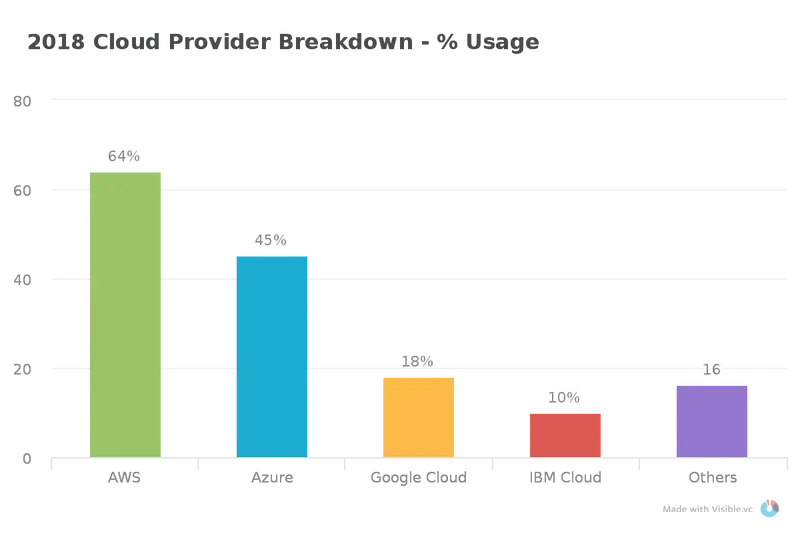
The Race to a Trillion Dollar Market Cap
Between the unofficial race to the first one trillion dollar company and the recent acquisition of GitHub we decided it would be an interesting time to look at Microsoft’s most recent shareholder letter. Recently passing Google’s market cap for the first time in 3 years their acquisitions and focus on “the cloud” (doesn’t hurt to purchase the company behind the largest repository of open source software) have proved to be a large factor in their push to $1T.
All of the charts, images, quotes, and emphasis below were added by us. Note: there may be removed sections of portions of the letter below. You can find the original 2017 Microsoft Shareholder Letter here.
PROGRESS AND OUR RESULTS
We delivered $90.0 billion in revenue and $22.3 billion in operating income this past fiscal year. Adjusting for Windows 10 revenue deferrals and restructuring expenses, revenue was $96.7 billion with $29.3 billion in operating income.
According to Morgan Stanley analyst, Microsoft will need to grow their revenue by 46% to $136B and net income to $46B to reach the trillion dollar threshold by 2020.
We continued to invest in innovation and expand our market opportunities, while maintaining our commitment to shareholder return, which included total cash return of $22.3 billion this year.
Our commercial cloud annualized revenue run rate ended the year exceeding $18.9 billion, up more than 56 percent year-over-year. Our cloud growth puts us squarely on track to reach the goal we set a little over two years ago of $20 billion in commercial cloud annualized revenue run rate in fiscal 2018.
“With Public Cloud adoption expected to grow from 21% of workloads today to 44% in the next three years, Microsoft looks poised to maintain a dominant position in a public cloud market we expect to more than double in size to (more than) $250 billion dollars.” – Morgan Stanley Analyst
Microsoft is doubling down on their cloud efforts and are expecting for strong growth with corporate usage for Office 365 and Azure.
The strength of our results across our reporting segments reflects our accelerating innovation as well as increased customer usage and engagement across our businesses
- More than 100 million people use Office 365 commercial.
- More than 27 million consumers use Office 365 Home & Personal across devices.
- More than 53 million members are active on Xbox Live.
- More than 500 million LinkedIn members use the LinkedIn network.
- Windows 10 is active on more than 500 million devices around the world.
- Dynamics 365 customers grew more than 40 percent year-over-year.
- Azure compute usage more than doubled year-over-year.

As of June 14, 2018 the market cap for each company is…
- Microsoft – $783B
- Apple – $946B
- Amazon – $832
- Google – $806B
LOOKING FORWARD: OUR EXPANSIVE OPPORTUNITY
A new technology paradigm
As you can begin to see in the examples above, a new technology paradigm is emerging, one with an intelligent cloud and an intelligent edge. Microsoft will lead this new era. There are three characteristics that define this shift. The first is that the experience layer is becoming multidevice and multisense, where a person’s experience with technology will span a multitude of devices and become increasingly more natural and multisensory with voice, ink, gestures and gaze interactions. Second, artificial intelligence (AI) will be pervasive across devices, apps and infrastructure to drive insights and act on your behalf. Third, computing will be more distributed than ever before with compute power at the edge, whether it’s the connected car, the connected factory floor or any connected device. As developers write new applications for this paradigm, they need new mechanisms to manage the complexity of distributed, event-driven computing.

Microsoft made a big splash with their recent $7.5B acquisition of GitHub. The acquisition stays in line with Satya Nadella’s focus on the cloud and open source projects. GitHub has already had a large presence in enterprise sales with GitHub enterprise and will be able to tap into Microsoft’s massive enterprise customer base. With the continued growth of public cloud usage Microsoft is looking to grow their strong position in the space.
With this new paradigm comes new opportunity. Every customer is looking for both innovative technology to drive new growth and a strategic partner that can help them build their own digital capability. Customers are looking to change how they use digital technology and to reimagine how they empower their employees, engage customers, optimize their operations, and change the very core of their products and services. They are building their own digital systems of intelligence to drive growth. Microsoft is uniquely positioned to capitalize on this opportunity with the combination of our technology, partner ecosystem and culture of growth mindset.
As we look ahead to fiscal 2018 and beyond, we will focus on bringing our technology and products together into experiences and solutions that deliver new value for our customers. Going forward, we will focus our innovation and investments in areas where we see the greatest opportunity for growth.
The modern workplace
The workplace itself is transforming — from changing employee expectations, a widening skills gap, more diverse and globally distributed teams, to an increasingly complex threat environment. The productivity experiences and tools we deliver will unlock the creator in all of us and enable seamless teamwork not just in the workplace, but also at school and at home across all the devices people use — from the phone to the laptop to mixed-reality headsets to the whiteboard. The Microsoft Graph, which provides the underlying data model of the user’s experience, and the LinkedIn network, will make it possible for every professional in any business or functional role to be much more productive in getting things done.
Enter Office 365, Windows 10, and LinkedIn. Office 365 currently has 100 million users and is expected to double to 200 million by 2020 on top of LinkedIns already 500m users.
Applications and infrastructure
Cloud computing is foundational to enabling digital transformation for any organization. Beyond being a trusted, global, hyper-scale cloud, what makes Azure unique is our hybrid consistency, developer productivity and SaaS application integration. Our hybrid infrastructure consistency spans identity, data, compute, management and security, helping to support the real-world needs and evolving regulatory requirements of commercial customers and enterprise-focused SaaS ISVs. Azure Stack is an extension of Azure that enables developers to build and deploy applications the same way whether they run on the intelligent cloud or the intelligent edge. With Visual Studio and Azure Services, we provide the toolchain and application platform for modern DevOps that helps organizations with their agility and productivity — and enable them to use the best of the Windows ecosystem and the best of the Linux ecosystem together. Azure enables SaaS ISV developers to reach 100 million plus enterprise users through the integration of Azure Active Directory and Office 365, and by embedding Power BI, Power Apps and Flow as part of their applications, enables customers to have consistent identity, developer extensibility and security across their application portfolio spanning their own custom applications and SaaS applications.
Microsoft has doubled down on their cloud investment and are going after Amazon and Google’s cloud services as the market continues to grow.
While AWS still has a commanding percentage of the enterprise cloud market Azure has been rapidly chipping away at Amazon’s lead. Azure went from 34% to 45% of the market while AWS still grew from 57% to 64%. The data above comes from a survey by TechRepublic of 1000 technical professionals.

Gaming
The $100 billion plus gaming industry is experiencing massive growth and transformation, and we have an expansive opportunity as we think about gaming end-to-end — from the way games are created and distributed to how they are played and viewed. We will build on our strong foundation of connected gaming assets across PC, console, mobile and work to grow and engage the 53 million strong Xbox Live member network more deeply and frequently — from great game experiences to streaming to social to mixed reality. We will be the company for gamers to play the games they want, with the people they want, on the devices they want. I’m excited about our opportunity to accelerate our growth opportunity, innovate boldly and earn new fans.
Microsoft has been on an acquisition spree in the gaming market. On June 10, Microsoft announced the acquisition of 4 game studios as they continue to innovate and grow their gaming business. Microsoft’s continued investment in Xbox, AI, and live streaming video games have the opportunity to be a large part of their Azure Cloud business.




